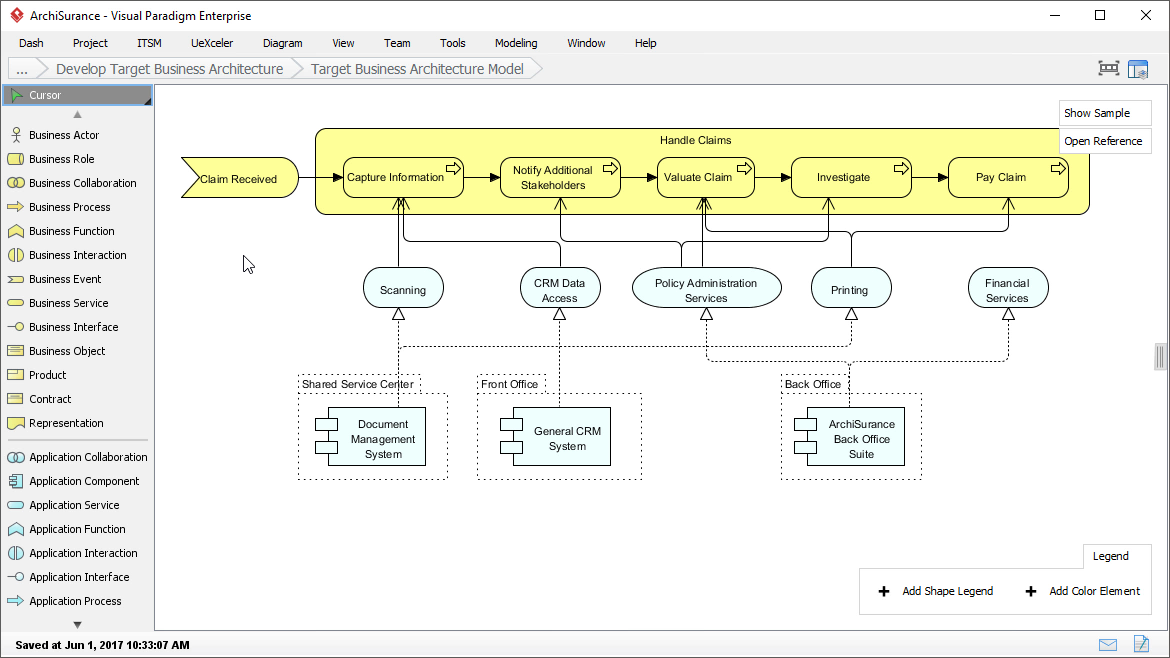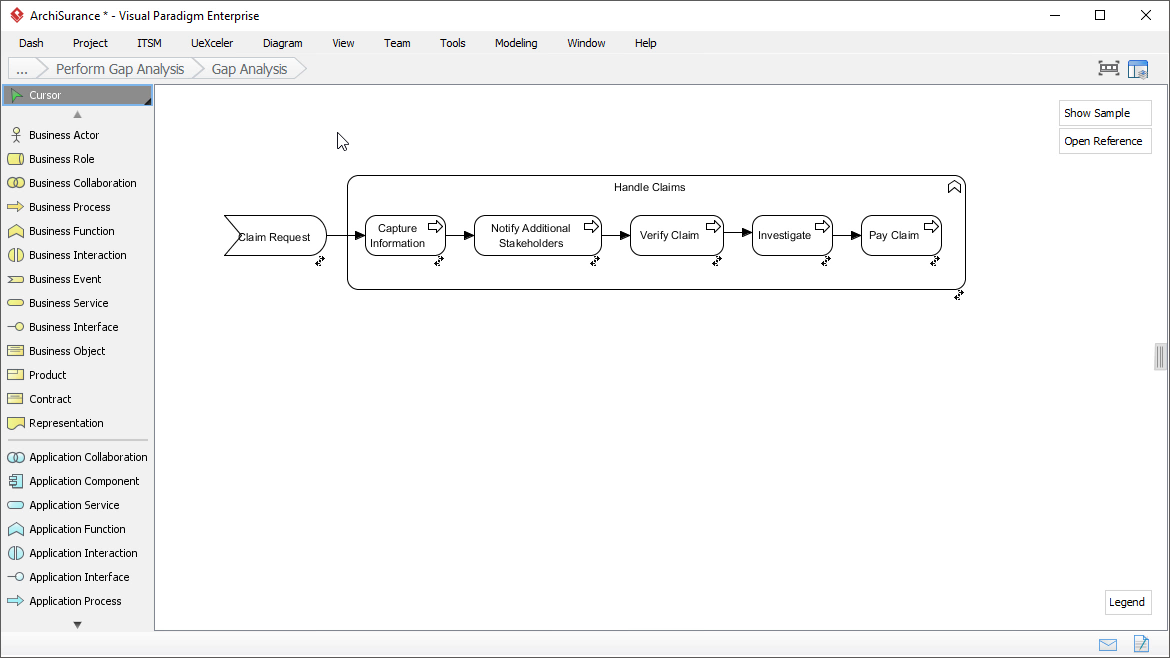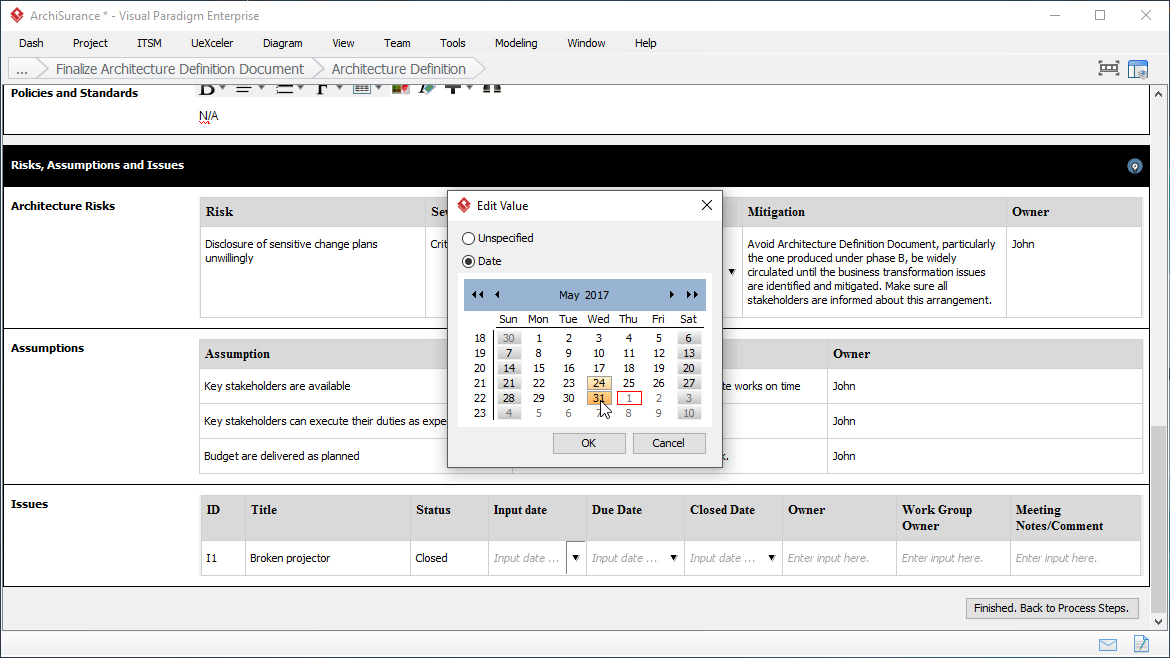Architecture Definition Document is one of the TOGAF deliverables you can create with the TOGAF tool.
This document describes the baseline and target business architecture for a project. It contains the core architectural artifacts created during a project.
The Architecture Definition Documents produces in phase B, C and D span all architecture domains (business, data, application, and technology) and also examines all relevant states of the architecture (baseline, interim state(s), and target).
The Architecture Definition Documents are a companion to the Architecture Requirements Specification, with a complementary objective:
- The Architecture Definition Documents provide a qualitative view of the solution and aims to communicate the intent of the architects.
- The Architecture Requirements Specification provides a quantitative view of the solution, stating measurable criteria that must be met during the implementation of the architecture.
Step 1: Identify the Responsibilities of Stakeholders for the Business Architecture
Describe the responsibilities of stakeholders with regards to the business architecture
Describe the responsibilities of the stakeholders for the business architecture. The stakeholders were defined in a previous activity. You only need to fill-in their responsibilities here.

Step 2: Develop Baseline Business Architecture
Model the baseline business architecture
Define the current Business Architecture that is in scope for this exercise. While it’s more common to use ArchiMate Diagram to visualize an architecture, you can add other types of diagrams you want to present the architecture information from a set of different perspectives (viewpoints) according to the requirements of the stakeholders.

Step 3: Develop Target Business Architecture
Model the target business architecture
Define the target Business Architecture that is in scope for this exercise. Again, you may create multiple diagrams for this purpose. The Target Business Architecture provides the details of a future state of an architecture being developed.

Step 4: Perform Gap Analysis
Analyze and describe the gaps between baseline and target business architecture
Define the gap between the current (as-is) and target (to-be) state Business Architectures. The gap defined here will aid in the definition of the scope of work that needs to be undertaken in order to transition from the current to the target Business Architecture. You are required to describe the gap by mean of an ArchiMate diagram, and to fill-in a form that explains the gap from 7 potential sources of business domain gap.

Step 5: Perform Impact Analysis
Describe the impacts associated with the business architecture
Assess and document the impact (on the organization) of the change required in order to transition from the current to the target state Business Architectures. Make sure the description is sufficient enough for the organization to determine the change management requirements for program(s)/project(s).
Step 6: Finalize Architecture Definition Document
Complete the form of ‘Architecture Definition Document’
Complete the form of Architecture Definition Document by providing the information required, such as the architecture objectives, stakeholders, constraints and compliance details. Information that had been provided in previous phases and activities are pre-populated. You only need to fill-in the empty fields and make necessary modifications on those pre-populated fields.
